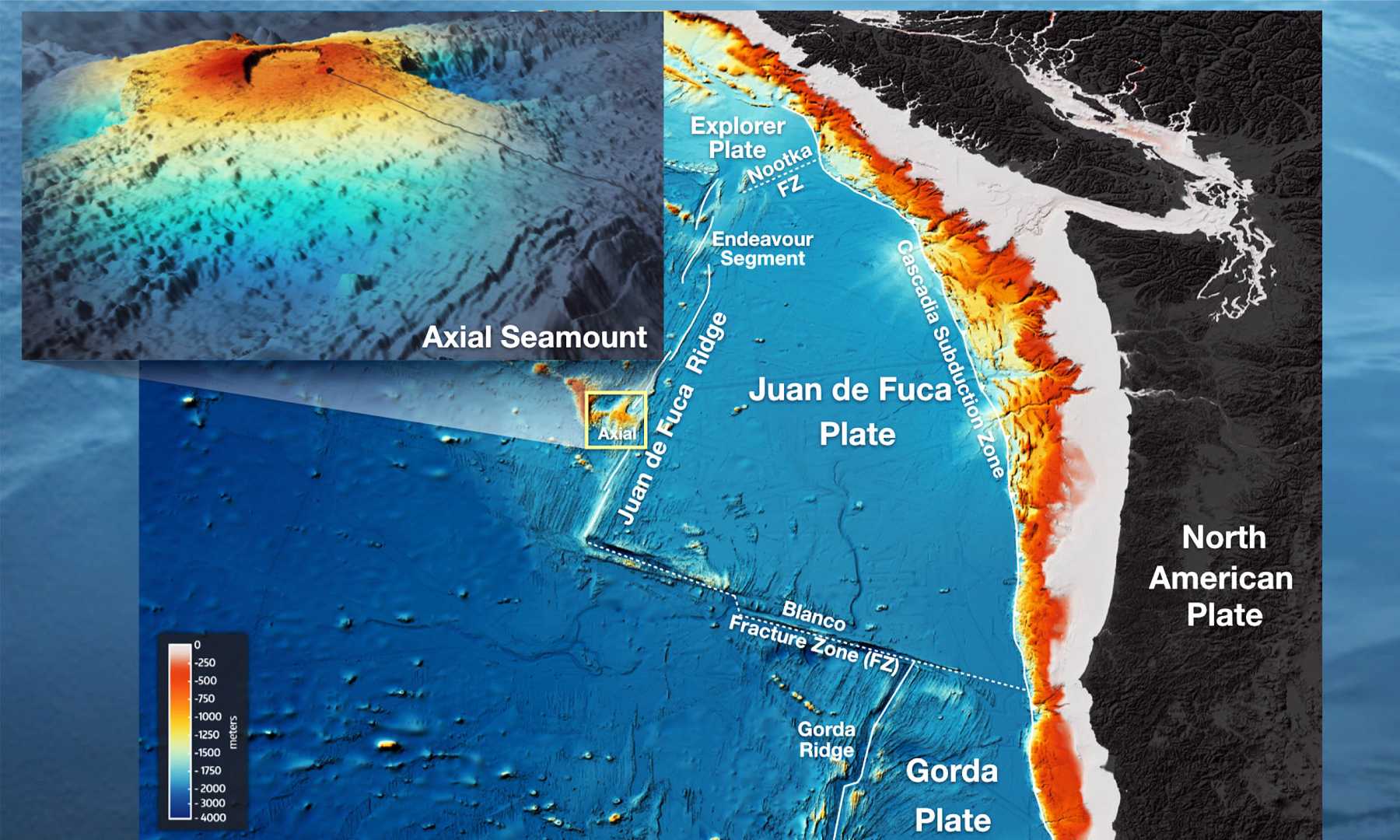News
Volcano Awakens: Axial Seamount May Erupt Soon

OCEANOGRAPHY, Pacific Northwest – Axial Seamount, an underwater volcano located about 480 kilometers west of the continental United States, is showing signs that it may erupt. Researchers at the 2024 annual American Geophysical Union conference announced that the volcano has suddenly become active.
The volcanic activity is attributed to its position above the Juan de Fuca Ridge, where tectonic plates meet. Geophysicist William Chadwick from Oregon State University stated in a recent talk that researchers predict an eruption could occur between July 2024 and the end of 2025 based on current trends and data.
Axial Seamount is unique; it is considered the most well-instrumented submarine volcano on Earth. Recent measurements reveal that the volcano’s surface has ballooned to levels seen before its last eruption in 2015, suggesting that magma is building up beneath.
William Wilcock, a professor at the University of Washington, noted, “If the amount of inflation can predict an eruption, we are in an exciting time, as it has already inflated to levels reached before past eruptions.” Wilcock added that such predictions are uncertain.
Despite the signs of an impending eruption, the rate of seismic activity nearby is relatively low. Deborah Kelley, also from the University of Washington, explained that while some researchers expected an increase in earthquakes, they are only observing about 200 to 300 small earthquakes daily.
Chadwick reassured that the eruption would not pose any danger to the public, stating, “People’s lives aren’t in the equation.” He emphasized that the underwater eruptions usually do not create tsunamis or seismic activities felt on land.
If the volcano does erupt, it will provide oceanographers and geophysicists the rare opportunity to study an eruption in real-time. Kelley remarked, “Three quarters of all volcanic activity on Earth occurs along mid-ocean spreading centers, and a direct observation is unprecedented for this location.”
As of now, researchers continue to monitor Axial Seamount closely, eager to learn more about its behavior and the geological processes involved.












